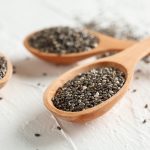In the food wars that are waged across popular health columns of current media, almost everyday there emerges a new edible adversary. Sometimes it’s sugar, rice or wheat, and at other times it’s dairy or meat. Given the near-universal anxiety over fat, it may seem curious then that nuts and seeds rarely make the list.
Perhaps, this has something to do with how nuts and seeds are found in their natural environment, outside of their usual context, i.e. as frills in decadent desserts and fried snacks. As the part of the plant with the ability to nourish and give rise to new life, they have a clean, wholesome image that’s hard to beat. Add to that their association with both traditional celebrations and festivals, and modern, Instagram-trendy diets, it is not surprising that people are left with the vague idea that they are “good for you”.
But aren’t they high in calories and fat? Should we really make a habit of consuming them regularly, just like we do fruits and vegetables?
A tale of two studies
One reason why research seems to flip-flop on what’s healthy and what’s not is that it is notoriously difficult to prove “causation”. Does exercise cause people to be healthy, or does good health cause people to exercise more? The only way to know for sure, would be to begin with a group of sedentary people and put them on a regular exercise regimen to prove that it improves the health of most. But this is harder to do for questions linking diet and disease. After all, you can’t feed people ice cream every day for a few years (no matter how much they might love it) to demonstrate they’ll eventually develop diabetes.
This is where cohort studies come in. They’re designed to track the habits of a large number of people over decades in order to discover links between dietary and lifestyle patterns and disease. One of the earliest studies, called the Adventist Health Study 1, tracked more than 31,000 Adventists, members of a religious sub-group famous for their adherence to a healthy lifestyle, for more than a decade. And for the first time, they found that those who regularly consumed nuts several times a week had a lower incidence of heart disease as compared to those who had them less frequently. Interestingly, nuts had a stronger heart-protective effect than any of the 65 other types of food that were tracked.
A similar pattern later emerged in the largest cohort study of women to date, called the Nurses’ Health Study. Even after other risk factors of heart disease such as family history, BMI, smoking, alcohol use, etc., were factored out, the group of women consuming nuts the most frequently (1 ounce, or 28.3 grams, more than 5 times per week) had a lower incidence of heart disease than groups having them less often. In addition, they also had lower rates of Type 2 Diabetes and respiratory disease.
The benefits of eating nuts are now so well established, that the US FDA permits nut manufacturers to maintain that eating 1 ounce of nuts per day reduces your risk of heart disease. So, if you had convinced yourself that all fat is your enemy, now is a good time to make an exception for nuts and seeds.
All are the same, yet different
All nuts and seeds have some form of saturated fat, but it is balanced by higher levels of “healthy fats” (monounsaturated and polyunsaturated fatty acids, including omega-3s). Like other plant-based foods, they have no cholesterol. In addition, they’re packed with beneficial fibre, proteins, vitamins, minerals, and antioxidants. They’re also considered a great source of phytonutrients, an emerging category of favorable plant chemicals, many of which have yet to be discovered (in case the list wasn’t long enough for you). In sum, it is less important which nuts and seeds you have, than how regularly you have them. To ensure you’re getting a broad range of nutrients, it is better to switch varieties periodically. Remember that more commonly available nuts and seeds, such as peanuts, almonds, flaxseeds, and sesame seeds, pack as much of a punch as the trendier ones such as brazil nuts, macadamia nuts, and chia seeds.
But this doesn’t mean that nuts and seeds are healthy in every form. Roasting and frying nuts, especially at high temperatures and for prolonged periods, degrades antioxidants and negatively affects their fatty acid profiles. Other forms of processing, like blanching almonds to remove their skins and hulling sesame seeds, also strips them of nutrients. For example, tahini (hulled sesame seed butter) has about 90% less calcium than whole sesame seeds. Evidently, you should also avoid nuts and seeds that are loaded with salt, sugar, and empty calories as in savory snacks, candied nuts, trail mixes, energy bars, and sweetened nut butters.
Lastly, you’ll want to keep your daily consumption of all varieties of nuts and seeds, at a handful or two. Their beneficial effects peak at about 20 grams per day, after which their calorie density could affect your diet inversely.
The happy takeaway
Nuts and seeds, when eaten in moderation and with minimal processing, are an assiduous way to stay healthy. Far from being fattening, they can help you feel satiated and full, while also reducing your risk of heart disease and Type 2 Diabetes. They are proof that no food group is your enemy, and that eating well doesn’t have to be monotonous and boring. Get a handful of nuts and seeds, and sprinkle, spread, and crunch your way to wellness.






